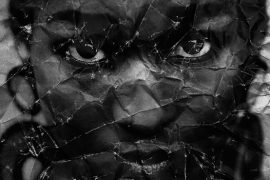Everything seems to indicate that agriculture and cattle-raising stand on...

A longer life expectancy throughout the planet is something that...

A good friend is with you to the end of...

The twin-cherry brand, originally established in Sitges in 1967 and...

Then, Agbar becomes the first large corporation that restores its...

La universidad norteamericana publica un caso de estudio que analiza...

With 0.1% of the worldwide population, Catalonia produces 1.3% of...

Apparently, what we thought was science fiction is beginning to...

What happens when a person comes in contact with the...

We forget songs, loves and trips. Maybe, because they did...

Música clásica sobre la arena de la playa en dos...

The first session of the cycle on the regatta organized...

The hospital's managing director, Manel del Castillo, and the pharmaceutical...

Generalitat y Ayuntamiento impulsarán dos equipamientos de 'Casa de les...

Leticia Beleta, director of Alexion Pharmaceuticals in Spain and Portugal,...

We all have a friend who never leaves the Gràcia...

Barcelona director opts for Best International Film with 'La sociedad...

The hotel and industrial sectors softened the market's decline last...

The technology company, with a workforce of 35 employees and...

“The women of yesteryear were strong and had to fight...
[dropcap letter=”T”]
he expression “the dark side of force” is one of the most popular. It appears in all the chapters of the saga, punctually used by the Jedi to refer to the wrong path, the wrong use of power on its spiritual interconnection with the world. However, this two-sided view, the concept of two opposing principles -typically Manichean, in that it grants entity to evil, as a principle that exists- is based on the most human of fears, the nonsense of suffering and the possibility of loss, ultimately represented by death.
Yoda, the master, gives a lecture to the young Anakin about his mother, who he has been forced to leave behind against his will in The Phantom Menace (Episode I), and warns him against hate: “Fear is the path to the dark side… fear leads to anger… anger leads to hate… hate leads to suffering. I sense much fear in you”.
The fear of loss and the need to subvert the meaning of evil deriving from this fear will make young Anakin succumb to the temptation. He will become Darth Vader, with the assistance of Lord Sith, which offers him higher power than that of the Jedi, like the capacity of defeating death.
Likewise, the Manichean lecture echoes the eternal trend of demonising the other; the stranger or the opponent, often classified as a “liar”. Once again, it fulfils a typically anthropological function, i.e. reaffirm one’s position with a view to accomplishing what Friedrich Nietzsche would refer to “self-preservation”. The mechanism of fear protects instinctively the human animal, but at the same time drives him to believe in a negative side, with its own entity and moral undertones. It is associated to “bad” behaviour, as it represents a vital threat.
The mechanism of fear protects instinctively the human animal, but at the same time drives him to believe in a negative side
When the early theologists declared heretical the gnostic sects that lived together with primeval Christianity -among which, those linked to Manicheism-, they remarked how, when trying to account for evil, its origin and its reason to exist, ended up granting evil a real entity. Even Saint Augustine, before his conversion to Christianity -that is, understanding evil as “absence of goodness”, of which man was responsible for- had found relief in the Manichean explanation, as it justified a rational appearance to less tolerable aspects of human existence.
The danger of this type of explanations, offered exclusively to the disciples, -the “chosen” ones, ready for salvation at the expense of most of the “deceived” ones-, lies mainly on the effects of its likely radicalization. The paradigm of the chosen/misunderstood ones aggravated, for example, among the Gnostic sect of the so-called Cainites. These would worship the figure of Jude as the real agent of salvation, since without his sinful appearance -i.e. his act of treachery on enabling the arrest of Jesus Christ, and eventually the suffering inflicted on him on the cross, the Passion- the act of grace, understood as the exclusive salvation of and by the followers of the officially repudiated character, should not be overestimated.
FROM RELATIVISM TO REACTIVE NIHILISM
Also in Star Wars the “dark side of the Force” -a critical moment that offers a tempting comprehension of the incomprehensible- affects the hero, whether it is Anakin, Luke, Ben (Kylo Ren) or Rey, with different outcomes.
To bring about the transformation of Anakin into Vader, Lord Sith explains that “Good is a point of view. The Sith and the Jedi are similar in almost every way, including their quest for greater power”.
In The Revenge of the Sith (Episode III) he encourages him to embrace a “wider view of the Force” and break away from the “narrow and dogmatic view of the Jedi”. Anakin, however, is only convinced about it when the Sith gives an argument that points to his biggest fear: “Learn to know the dark side of the Force, and you will be able to save your wife from certain death”.
On its latest release, in Episode VIII, Kylo Ren’s invitation to Rey -the invitation to leave everything behind, “the order of the Jedi and Sith”, who are evenly matched to form a powerful pair that can renovate and transcend previous regimes- is not effective until he pokes his finger into the most painful wound, and reveals the prevalence of the dark side, despite predominance of fear. To persuade her, Kylo Ren refers to humility and uncertainty of her origins, specifically the traumatic abandonment from her parents; an unacceptable abandonment, still nagging her. He refers to them as filthy drug traders, who sold her off to continue their addictions. Literally, he says “you come from nothing, you are nothing, but not to me”.
A symptom of sickly insecurity, Kylo Ren’s fear drives him to adopt a new form of reactive nihilism, summarized in the neurotic quote “either Caesar or nothing”
The way of convincing Rey is a typical technique used by sects, consisting in making the newcomer, battered and emotionally unstable, feel special (“chosen”), after having destroyed or depreciated his world: nobody understands you, you have nothing, you are nobody, everybody lies to you and has the wrong idea about you… but here we can show you reality, if you join us the real you will arise, because you are special and deserve being powerful. In the case of Kylo Ren, the fear is not about loss, as was the case with her worshiped Darth Vader (Anakin), but rather a symptom of sickly insecurity -maybe, and we are guessing here, for not having been sufficiently appreciated as a child, could this end up in a new spin off?- which, in any case, brings about a new form of reactive nihilism, summarized in the neurotic quote “either Caesar or nothing”.
This extreme behaviour, masterfully illustrated by Albert Camus in Caligula -an extremely childish behaviour, toggling between supreme empowerment and destructive passion-, aims to be overcome by the Jedi paradigm to demonstrate -from the early stages of the saga in The Empire Strikes Back and Return of the Jedi, and further reinforced in The Last Jedi– that, in fact, nobody is immune to succumb to fear and deification can become lethal for those who believe to be positioned on the “light” dark of the Force.. (To be continued…)
[dropcap letter=”T”]
he expression “the dark side of force” is one of the most popular. It appears in all the chapters of the saga, punctually used by the Jedi to refer to the wrong path, the wrong use of power on its spiritual interconnection with the world. However, this two-sided view, the concept of two opposing principles -typically Manichean, in that it grants entity to evil, as a principle that exists- is based on the most human of fears, the nonsense of suffering and the possibility of loss, ultimately represented by death.
Yoda, the master, gives a lecture to the young Anakin about his mother, who he has been forced to leave behind against his will in The Phantom Menace (Episode I), and warns him against hate: “Fear is the path to the dark side… fear leads to anger… anger leads to hate… hate leads to suffering. I sense much fear in you”.
The fear of loss and the need to subvert the meaning of evil deriving from this fear will make young Anakin succumb to the temptation. He will become Darth Vader, with the assistance of Lord Sith, which offers him higher power than that of the Jedi, like the capacity of defeating death.
Likewise, the Manichean lecture echoes the eternal trend of demonising the other; the stranger or the opponent, often classified as a “liar”. Once again, it fulfils a typically anthropological function, i.e. reaffirm one’s position with a view to accomplishing what Friedrich Nietzsche would refer to “self-preservation”. The mechanism of fear protects instinctively the human animal, but at the same time drives him to believe in a negative side, with its own entity and moral undertones. It is associated to “bad” behaviour, as it represents a vital threat.
The mechanism of fear protects instinctively the human animal, but at the same time drives him to believe in a negative side
When the early theologists declared heretical the gnostic sects that lived together with primeval Christianity -among which, those linked to Manicheism-, they remarked how, when trying to account for evil, its origin and its reason to exist, ended up granting evil a real entity. Even Saint Augustine, before his conversion to Christianity -that is, understanding evil as “absence of goodness”, of which man was responsible for- had found relief in the Manichean explanation, as it justified a rational appearance to less tolerable aspects of human existence.
The danger of this type of explanations, offered exclusively to the disciples, -the “chosen” ones, ready for salvation at the expense of most of the “deceived” ones-, lies mainly on the effects of its likely radicalization. The paradigm of the chosen/misunderstood ones aggravated, for example, among the Gnostic sect of the so-called Cainites. These would worship the figure of Jude as the real agent of salvation, since without his sinful appearance -i.e. his act of treachery on enabling the arrest of Jesus Christ, and eventually the suffering inflicted on him on the cross, the Passion- the act of grace, understood as the exclusive salvation of and by the followers of the officially repudiated character, should not be overestimated.
FROM RELATIVISM TO REACTIVE NIHILISM
Also in Star Wars the “dark side of the Force” -a critical moment that offers a tempting comprehension of the incomprehensible- affects the hero, whether it is Anakin, Luke, Ben (Kylo Ren) or Rey, with different outcomes.
To bring about the transformation of Anakin into Vader, Lord Sith explains that “Good is a point of view. The Sith and the Jedi are similar in almost every way, including their quest for greater power”.
In The Revenge of the Sith (Episode III) he encourages him to embrace a “wider view of the Force” and break away from the “narrow and dogmatic view of the Jedi”. Anakin, however, is only convinced about it when the Sith gives an argument that points to his biggest fear: “Learn to know the dark side of the Force, and you will be able to save your wife from certain death”.
On its latest release, in Episode VIII, Kylo Ren’s invitation to Rey -the invitation to leave everything behind, “the order of the Jedi and Sith”, who are evenly matched to form a powerful pair that can renovate and transcend previous regimes- is not effective until he pokes his finger into the most painful wound, and reveals the prevalence of the dark side, despite predominance of fear. To persuade her, Kylo Ren refers to humility and uncertainty of her origins, specifically the traumatic abandonment from her parents; an unacceptable abandonment, still nagging her. He refers to them as filthy drug traders, who sold her off to continue their addictions. Literally, he says “you come from nothing, you are nothing, but not to me”.
A symptom of sickly insecurity, Kylo Ren’s fear drives him to adopt a new form of reactive nihilism, summarized in the neurotic quote “either Caesar or nothing”
The way of convincing Rey is a typical technique used by sects, consisting in making the newcomer, battered and emotionally unstable, feel special (“chosen”), after having destroyed or depreciated his world: nobody understands you, you have nothing, you are nobody, everybody lies to you and has the wrong idea about you… but here we can show you reality, if you join us the real you will arise, because you are special and deserve being powerful. In the case of Kylo Ren, the fear is not about loss, as was the case with her worshiped Darth Vader (Anakin), but rather a symptom of sickly insecurity -maybe, and we are guessing here, for not having been sufficiently appreciated as a child, could this end up in a new spin off?- which, in any case, brings about a new form of reactive nihilism, summarized in the neurotic quote “either Caesar or nothing”.
This extreme behaviour, masterfully illustrated by Albert Camus in Caligula -an extremely childish behaviour, toggling between supreme empowerment and destructive passion-, aims to be overcome by the Jedi paradigm to demonstrate -from the early stages of the saga in The Empire Strikes Back and Return of the Jedi, and further reinforced in The Last Jedi– that, in fact, nobody is immune to succumb to fear and deification can become lethal for those who believe to be positioned on the “light” dark of the Force.. (To be continued…)
